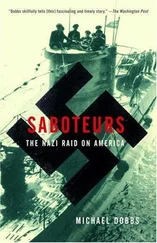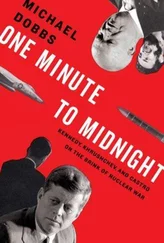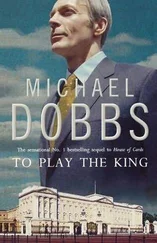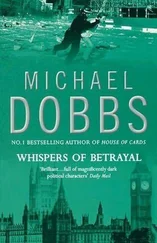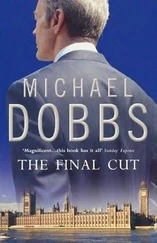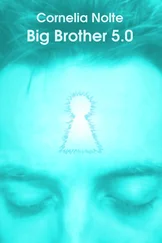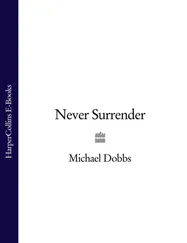The debates were particularly lively in Manezh Square, alongside the Kremlin wall, which had been occupied the previous day by KGB spetsnaz units from the Moscow area. In recent months they had been training to support the Alpha Group in unspecified “antiterrorist operations.” They were well motivated and combat-ready. But even they were beginning to have doubts about their latest assignment.
The operation had begun badly. Driving into central Moscow, they had been delayed by a traffic accident, involving two armored personnel carriers and a passenger car. A soldier was taken to the hospital with a concussion. By the time the armored column reached the Manezh, the entrances to the square were blocked with trolley-buses. The spetsnaz had pushed the trolley-buses out of the way with the help of special engineering equipment, only to be confronted with crowds of unarmed civilians. None of the soldiers in the Manezh had any training in crowd control. Clearing the square of demonstrators, without resorting to force, had occupied the rest of the day.
That night the troops had attempted to get some rest in the holds of their armored cars. But they were constantly interrupted by visits from delegations of people’s deputies, representing both the Russian parliament and the Moscow City Council. The deputies distributed packages of Yeltsin decrees, appealing to the troops to ignore the orders of the GKChP and heed the authority of the Russian parliament. The spetsnaz officers were impressed by the red badges worn by the deputies in their lapels, a sign of their official status. Discussing the situation among themselves, they gradually reached the conclusion that Gorbachev’s overthrow had been unconstitutional. The officers’ uneasiness encouraged the deputies to push harder.
“Let’s all go to the Kremlin right now, and settle all this with Yanayev,” suggested Boris Nemtsov, a legislator from the Volga River city of Nizhni Novgorod, only half in jest. 107
“No, boys, that’s your business,” replied a spetsnaz colonel. “But you do whatever you want. We won’t stop you.”
In the early evening the spetsnaz troops received an order to withdraw from the Manezh and return to their barracks at Teplyi Stan in southwest Moscow. They were told that they would be taking part in a “special operation” later that night. Every soldier was required to equip himself with a bulletproof vest and two clips of live ammunition. The entire division was placed on battle alert. The officers were convinced that they would soon be ordered to attack the White House. For the first time in their military careers they began to argue about whether to fulfill an order.
“I won’t give an order to shoot,” one company commander told his men. “Act according to your conscience.” 108
“If I am ordered to shoot, I will obey the order,” said a lieutenant.
After some debate the officers reached a decision. They would halt at the first barricade, switch off their radios, and refuse to take any further part in the storming of the parliament building.
As the spetsnaz column pulled out of the Manezh, one of the APCs was flying the Russian tricolor rather than the red Soviet flag. Given the circumstances, it was an extraordinary act of defiance. Plainclothes KGB men accompanying the column launched an immediate inquiry and established that the flag had been raised on the orders of a platoon commander, Captain Oleg Nevzorov. They told him to take it down, adding, “We’ll deal with you later.”
ALL DAY LARGE CROWDS HAD BEEN GATHERING in front of the White House. Grachev used the network of Afghan war veterans to send word to Russian leaders that a decision to storm the building had been made. The best chance of avoiding such a catastrophe, he told them, would be to appeal to Muscovites to defend the building. The attacking forces would certainly be very reluctant to shoot unarmed civilians. 109
The defenders of the White House spent the afternoon erecting barricades from pieces of scrap metal and ripped-up cobblestones. A local transportation company provided dozens of heavy vehicles, which were used to block all the approach roads to the parliament building and the bridges across the river. Soon the area around the White House resembled the scene in Tiananmen Square in 1989, shortly before the military assault. Tens of thousands of people stood in a series of circles around the building, arms linked, ready to sacrifice their lives in the event of a military assault. Many people carried pocket transistor radios, most of which were tuned to the independent Ekho Moskvy (Echo of Moscow) station, which was providing regular updates about troop movements.
A large section of the crowd was composed of young people, many of whom had shown little previous interest in politics. It had taken a coup to jolt them out of their apathy and make them realize that they had a stake in the political future of the country. Members of the new entrepreneurial class were also well represented at the barricades. Brokers on the Moscow commodity exchange had demonstrated their support for Yeltsin by marching to the White House carrying a three-hundred-foot-long Russian tricolor.
As the brilliant sunshine of the first two days of the coup turned to a steady drizzle, the mood of the White House defenders grew steadily more bleak. Everything seemed to indicate that the final preparations for the assault were under way. At first the attack was expected in the early evening. All women were ordered to leave the building. The twenty ground-floor entrances were secured with barricades. Shortly after 6:00 p.m. deputies who had gathered in Yeltsin’s office in the fifth floor began issuing panicky statements over Echo Moskvy, suggesting that Russian democracy was doomed.
“I appeal to you, my brother officers,” said Aleksandr Rutskoi, the Russian vice president and a former Afghan war hero. “Think of the orders that you are being given. The interests you are defending are not those of the state, but those of the junta. Nobody will forgive you.” 110
At the peak of the tension deputies still inside the White House noticed a sudden surge of activity outside. The focal point was an elderly man with a shock of white hair attempting to force his way through the concentric lines of defenders. There was a great deal of shouting and pushing and shoving going on. Some people were urging that the man be let into the building, while others were insisting that he be kept out.
“I must see Yeltsin,” the old man kept yelling above the hubbub, a look of total determination on his face.
The intruder’s identity eventually became clear. It was the world-renowned musician Mstislav Rostropovich, who had been stripped of his Soviet citizenship by the Brezhnev regime in 1978 because of his friendship with Aleksandr Solzhenitsyn. Rostropovich had played his cello by the Berlin Wall in November 1989 and was determined to defend the cause of freedom in his native Russia. He had heard about the coup in Paris and had taken the first available Air France flight to Moscow. He had bluffed his way past the border guards, telling them he had come to participate in a conference of Russian compatriots that was being held in the Soviet capital. They had granted him a visa on the spot. From the airport he had taken a taxi directly to the White House. Russian deputies later joked that he was the only person to succeed in storming the building during the coup. 111
The sight of Rostropovich pushing his way past the barricades at such a critical moment did not please all the defenders of the White House. Nemtsov, the deputy from Nizhni Novgorod, feared that a nervous defender might be tempted to open fire. Yeltsin, however, immediately understood the symbolic value of having such a celebrated figure by his side. He permitted the sixty-four-year-old cellist to stand guard for a time outside his fifth-floor office with a borrowed AK-47 assault rifle. 112The irrepressible Rostropovich was soon swapping Lenin jokes with his fellow defenders and insisting that everyone address him as Slava.
Читать дальше

